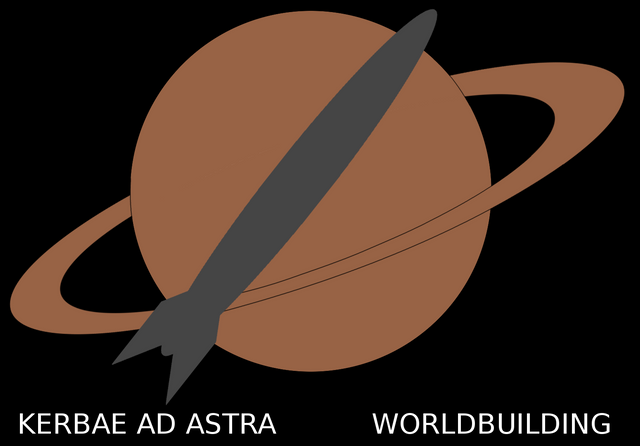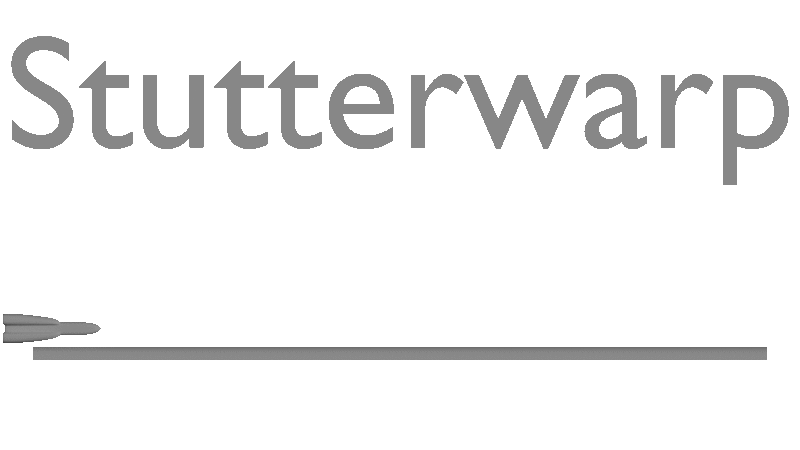A Primer on Faster-Than-Light Travel — A Kerbae ad Astra Worldbuilding Supplement

This is the first of many articles detailing the way things work in Kerbae ad Astra. First on the list is faster-than-light travel—arguably one of the most important parts of any scifi world. Kerbae ad Astra features not one, but four kinds of faster-than-light travel. Each of these works in a distinct way consistent with the slightly different physics of the KaA-verse. For narrative reasons, any ship and most factions may fit exactly one kind of drive.

Frameshift drives represent the smallest divergence from real physics. So far, frameshift drives have not been conclusively proven impossible, which is more than can be said for most kinds of FTL. Check out Alcubierre drives if you want to know more about the (speculative) real-life equivalent of this drive type.
Frameshifts in KaA work on the same principle: a small "bubble" of space is wrapped up in a warp field and moved. The reference frame within the bubble remains inertial (i.e. non-accelerating), so even though the bubble itself can move at many times the speed of light, nothing within it moves. It's a bit like sitting on a raft and letting the river carry you downstream, instead of walking along the shore. (Don't look too closely at that analogy—it breaks down pretty quickly.) Frameshift drives have the distinct advantage of being practical at any speed from a walking pace to several hundred thousand times the speed of light. That means you can use them within a star system, or even within the orbital space above a planet. However, because it does not accelerate in the traditional sense, the velocity you had before you turned the drive on is the same as the velocity after you shut it off. This means you need to make some (potentially large) adjustments to enter a sensible orbit of your destination body. (Anyone who's used warp drives in Kerbal Space Program knows what I'm talking about.) There are clever maneuvers you can make to use the planet's gravity to complete these adjustments largely for free, but I won't go into detail about those here. Excessively tight spatial curvature deforms the bubble and may result in intersection with the craft inside. The results of this are messy and should be avoided.
Frameshift drives also scoop up matter in the leading edge of the bubble. The edge of the warp field is… hostile, to say the least, and so the matter is generally ripped apart to its component atoms (or further) and accelerated to speeds rivalling cosmic rays. When the bubble is dropped, this "bow shock" of ionising radiation is released and travels in a highly collimated beam. This beam is an important consideration for both civilian and military applications, and forms an integral part of frameshift drive war doctrine.
Frameshift drives require a large amount of exotic matter and energy to operate. Exotic matter (or negative mass, often abbreviated XM) cannot be stored for a meaningful length of time (think antimatter, only more so), and so must be generated on the spot. The energy and XM are consumed to create a warp field. This warp field is spherical or spheroidal, and the energy required to form it and generate meaningful speeds increases with the fourth power of the radius (or linearly with the enclosed hypervolume—we'll get to hyperspace shortly). Frameshift drives also require upkeep—there is a certain amount of "drag" associated with moving an isolated bubble through space. This force-like drag quantity increases with the square of velocity (like aerodynamic drag), and so the upkeep power scales with the cube of velocity. The energy lost to drag is deposited in the drive as heat. When the field is dropped, all the remaining energy is dissipated by the drive as—you guessed it—heat. (Heat is a big thing in most of these FTL drives. Cooldowns are literally cooldowns, and if you ignore them you'll slag your drive.)
These scaling laws make frameshift drive-equipped vessels relatively small and very compact. There is little to no need for reaction drives, except for attitude control. Additionally, mastery of frameshift drives does not bring with it the ability to create artificial gravity, so if you want gravity you'll need to get it the usual ways—and with the lack of strong reaction drives, thrust gravity is out. Frameshift vessels will, thus, either have gravity rings or be in microgravity. The frameshift drive also offers a natural shield in its warp field—a "surface" type shield. This shield type is akin to the standard scifi shielding, with a certain degree of integrity at any given point. Impacts upon the shield deform it and reduce its integrity, as does incident radiation. A strained shield's ripples may produce an iridescent effect. Large frameshift vessels are nearly pure shield-tanks (rely on shields for staying power), because they have little volume to spare on thick armor (recall that fourth-power scaling factor). Smaller vessels may have weaker shields and a bit of armor. Because frameshift drives do not include any terms for mass, and takes care of orbital maneuvering effortlessly, frameshift vessels are able to use many heavy forms of power generation, such as Penrose process angular momentum batteries and fission reactors.

Spacefolding, like frameshifting, is rooted loosely in a questionable understanding of real physics. In short: It's a wormhole generator. Check out wormholes for more information on the kind of wormholes which may or may not exist in reality.
Spacefolders… well, they fold space. Imagine space as a rubber sheet, then fold it in half and spotweld it together. That spotweld is a wormhole. Now, imagine that the rubber sheet is a bit too stiff to be held in a folded position by a mere spotweld. If you stop holding it together, it will break the weld and return to a flat position. In the KaA-verse, wormholes do not last long without maintenance. However, while they are open, light and matter may travel through them coherently (i.e. unscrambled). This means wormholes are "transparent." Wormholes may only be formed between positions in space at equal potentials, though as most matter is largely electrically neutral gravity is the most important. Of course, if you try to place a wormhole inside solid matter, its electric and—more importantly—nuclear potential will be emphatically not zero, so the wormhole will be rather difficult to link anywhere else. This gravitational potential requirement makes it very difficult to link into unknown space, effectively restricting use to space which has been thoroughly surveyed. With greater computational resources and more robust models these surveys may be completed at a greater distance and the data so obtained may be valid for longer before growing stale. While a certain degree of inaccuracy is permissible, the bonds of matter are only so strong. A failure of potential alignment may result in the wormhole endpoints sliding around in space and shredding anything which goes through it.
Because momentum is conserved, wormholes can be used to shorten the distance a projectile must cross. This allows them to be used in combat to artificially close range with a target. This is a double-edged sword, however, because projectiles can likewise travel back through the wormhole.
Spacefolders require a homebrew unobtainium known as spatiofibrin. Spatiofibrin interacts with space itself, as well as electromagnetically. This allows it to pull space into the fold necessary for a wormhole, as well as punching the hole itself. Spatiofibrin is consumed, but in a quantity which is small compared to the amount needed. It is between a reagent and a catalyst, a bit like motor oil. Spacefolders also require huge amounts of energy, related to the square of the radius of the wormhole. All energy put into opening and maintaining a wormhole is returned to the drive as heat by the time the hole is closed.
Many spacefolders are mounted on "gates," and the vessels which traverse the wormhole are typically narrow, needlelike craft. The technology for artificial gravity comes as a natural consequence of spacefolding, so most spacefolder vessels are either equipped with artificial gravity or remain in microgravity. The gravitational potential requirement means spacefolder-equipped vessels must have reasonably strong reaction drives to add or remove energy. Spacefolding vessels are generally shieldtanks, using the volumetric shielding which develops as a natural consequence of the use of spatiofibrin. (We'll explore volumetric shielding in great detail in a future article.) Spacefolders rely upon their reaction engines, so thick armor (which is, by the way, quite heavy) incurs great costs to maneuverability. The large energy costs of spacefolding make fusion and antimatter attractive options.

Stutterwarp is a sort of offshoot of spacefolding. A stutterwarp drive requires two parts: the wave generator and the weaver. The wave generator forms a wave in space, while the weaver connects points at the adjacent peaks of the wave by a small wormhole. Stutterwarp works around the potential locking of spacefolders both by limiting its folding to short distances and by generating its own potential "terrain" which has easy linking points. However, this changes its behavior to a quasi-continuous spatial contraction. The weaver can only make holes as fast as the vessel goes through them, so the vessel must change its real velocity with reaction engines. Stutterwarp conditions are referred to by their contraction factor, which determines how the real velocity change relates to the apparent velocity change. This depends on both the amplitude and wavelength of the wave. The amplitude determines how much space is tied up in a wave, and the wavelength how densely-packed the waves are.
Stutterwarp requires clean, or at least predictable, waveforms. While a certain amount of deviation is acceptable, excessions may force the weaver's wormhole to close. If this happens when a vessel is inside it, an event known as a segmentation fault will occur. Segmentation faults cut the vessel involved into two or more pieces, which may be separated by as much as several megameters. While a shorter wavelength results in a larger contraction factor, it increases the chance of a catastrophic segmentation fault. Amplitude, though more energetically costly, is a safer method of increasing contraction factor, though it increases the severity of a segmentation fault by further separating the pieces. Stutterwarp allows almost unparalleled opportunity for misinformation, as, while wave generators are incredibly noisy, weavers make very little difference to the signature. In this way, one might project force where there is none, and mask force under a freighter fleet.
Like spacefolders, stutterwarp drives require spatiofibrin to weave. The wave generator, however, uses exotic matter to produce its wave. All energy which is put into the wave returns to the wave generator as heat during operation or the terminal damping process. Wave energy is related to its wavelength and amplitude in the same way as standing waves in water, air, or elastic strings. Its energy is not related to the vessels within it at all. The energy required of the weaver scales with the square of the radius of the wormhole needed, though most of the work has already been done by the wave generator.
Because the wave generator is basically an antenna, it has a certain minimal size. This size is, for practical wavelengths, rather large. Luckily, the weaver and wave generator are separate components; a weaver may ride a wave generated by a different vessel. This results in a wide dichotomy between small and large ships. The smaller vessels possess only a weaver—a relatively small component—while the large vessels must fit a wave generator. Most fleets include a few large wave generator-equipped ships and many smaller vessels. Because of the small size of weavers, "carriers" rarely actually carry their parasites. Instead, they fit wave generators and let the parasites ride their waves. In this sense, nearly every fleet operation with stutterwarp is a carrier operation. Stutterwarp demands very strong reaction drives, because it requires real acceleration to work at all. Because of the mass penalties of armor stutterwarp vessels are near-universally shieldtanks. Stutterwarp, as a spatiofibrin-dependant technology, produces volumetric shielding and artificial gravity. However, many vessels rely on thrust gravity for much of their voyages—a side effect of the torch-grade reaction engines. Stutterwarp vessels require very high energy densities for power generation and generally rely on fusion and antimatter.

In the KaA-verse, space is not an ocean. Nor is it the mundane three-space with which our own spacecraft must contend. It is nothing less than a four-dimensional hypervolume, and may even have more dimensions besides (though four dimensions stretches imagination enough already).
What does this mean?
Imagine, if you will, an onion. Or go to the kitchen and grab one, if you would like. Its outermost layer of flesh is the universe as we know it. The other FTL technologies pleat this surface, or fold it, or grab chunks of it and drag them around. But polyspatial technology interacts with the other layers. Cut the onion in half and look at the rings. The inner rings are smaller than the outer ones. This is the core, underlying principle of the polyspatial drive. The polyspatial drive "translates" along radii of the onion—and only along radii.
There are three main ways to translate. The first, and most naïve way, is to simply claw your way through each layer one after another. This is energetically expensive and requires you to push the entire way with the translation drive. However, failures of the translation drive will just make you stop translating. While you will be stranded, you'll be better off than failures of the second kind of drive. This drive rotates the vessel, exchanging one of the regular axes for the radial axis of hyperspace. With the vessel in such a configuration, it can thrust radially with its reaction drives to translate. The drive then rotates it back into realspace. A failure of this drive may strand you in the strange rotated space, or—worse—somewhere in-between. In the worst case, the rotations won't quite line up, and things will suffer extremely strange and disconcerting effects, ranging from vertigo, amnesia, and ebullism to organ inversion or displacement and spontaneous nuclear fusion. For this reason, translation drives of the second kind are usually kept at cryogenic temperatures. The third method of translation, however, is both safer than the second and cheaper than the first. It involves a very limited kind of wormhole which connects points along the radius. Take a very thin slice of your onion and fold it so that an outer ring touches an inner ring. This requires a folding of one dimension of four-space in five-space, an operation which is fundamentally different from the folding of three-space in four-space.
As you contemplate your onion, you may wonder why a ship doesn't just go straight to the center. This is because highspace is full of so-called "spatial fluid." Spatial fluid, sometimes abbreviated spat-flo, is 100% not æther. (It's totally æther.) The density of spat-flo is effectively zero in realspace. However, the closer you get to the center of the onion, the denser it gets. Near the center its density is such that anything which enters it will be crushed into degenerate matter. Somewhat outside this critical zone, it is more like syrup and will actually apply drag to anything passing through it. Its velocity is bound to the largest local mass in realspace, like planets or stars. Because of the peculiar way in which it interacts with matter, it can only apply drag (not lift). Wings and similar constructs will not provide lifting force, but drag alone. It also has no temperature, so it cannot be used as a thermal sink, and is transparent to all electromagnetic radiation. However, because it carries momentum, it can be exploited as reaction mass. It is this which forms the foundation of the so-called "spatial turbine." Spatial turbines supplant standard reaction drives in nearly all modern polyspatial drive-equipped vessels while in highspace.
Polyspatial drives operate on spatiofibrin. Spatiofibrin is consumed in translation operations of the first and second kinds, and required as a catalyst for operations of the third kind. Most of the cost of polyspatial operation is incurred while in highspace, depending on the reaction drives used in highspace. Energy and spatiofibrin costs are largely unrelated to vessel size and mass.
Polyspatial-equipped vessels, unlike any other kind of spacecraft, must be streamlined to minimize the drag exerted on them by spat-flo. Because translation scales little with vessel size, and highspace provides its own reaction mass, polyspatial-equipped vessels exhibit very large variation in scale. Likewise, armortanking is somewhat viable with polyspatial vessels, though generally speaking emphasis is still placed on the volumetric shields (again, a natural consequence of spatiofibrin mastery). Polyspatial vessels generally possess artificial gravity. Carriers possess advantages in propulsive power and streamlining over equivalent swarms of smaller ships, and so are popular. Carriers are also not limited to hosting mere fighters—the largest carriers may carry entire task groups. Polyspatial-equipped vessels typically possess middling-grade realspace reaction drives, used mostly for orbital corrections and evasion in combat. Vessels of this type generally have plenty of mass to spare on more conservative power generation, such as hot fusion, without being able to ignore mass entirely—generally they will not fit Penrose process angular momentum batteries.
Honorary Mention: Slower-Than-Light
STL is trivially not a kind of FTL (it's right there in the name). However, as a way to get from point A to point B where there's a gap of several light-years, it still deserves a mention. Several major varieties of STL interstellar travel exist—the pion torch, the starwisp, and the ramscoop.
The pion torch is a gigantic rocket powered by the fullest might of E=mc². Also known as a beam-core antimatter rocket, it carries only antimatter and matter, deriving its remass from the products of nucleon-antinucleon annihilation—pions and gamma rays—from which it gets its name. While it is tremendously powerful, as much as 80% of its products are neutral pions or gamma rays—completely useless for propulsion. Instead, they emanate in all directions as the stuff endearingly referred to as "deadly radiation." This makes pion torches exceptionally dangerous (well, that and the literal metric tons of antimatter). Pion torches are the embodiment of Jon's Law. None but a civilisation of madmen would allow a pion torch nearer than several AU from a habitable planet.
Starwisps are a somewhat more benign option. They are like solar sails, only more so. Gigantic nets of gossamer strands absorb or reflect light and particulate radiation from the local star or planetary-scale laser. This accelerates the starwisp to near-luminal velocities with little to no effort on its part. Needless to say, this is not exactly a prime candidate for freighters.
Finally, the ramscoop offers a middle ground. With no more danger than the usual fusion rocket, but more thrust than starwisp's mere rounding error, it consumes the interstellar medium and fuses it. The results are exhausted as plasma. Ramscoops suffer restrictions in volumes of space populated densely with stars, as the interstellar medium is thinned by the stars. Additionally, the ramscoop needs to be accelerated to its critical velocity before it will generate net positive thrust. This is not a small investment—sometimes high enough to be measured in fractions of c—but is possible with the combination of several gravity assists and some very high-performance drives. They also have a hard limit of about 0.18c, because they must provide net acceleration to their propellant.
That concludes the article on how to make things go faster than the speed of light. In our next article, we'll explore how to make things stop going faster than the speed of light.

#SoCalSteemit is building and supporting the Steemit community of Southern California. If you are from SoCal and are into creating quality content here on Steemit, we'd love for you to follow us @SoCalSteemit and join our group on Discord

This work is licensed under a Creative Commons Attribution-NonCommercial 4.0 International License.
Thank you so much for being part of the #socalsteemit community.
The animations really helped me understand and appreciate what you are describing here. It's fascinating how each type of drive operates under specific parameters.
Fascinating. I recently read "Adrift" by Rob Boffard which features wormholes. Thanks for the explanations and helpful visuals.
Glad to hear you liked it. I might have to check Adrift out myself.
Congratulations @narwhalz0111! You have completed the following achievement on Steemit and have been rewarded with new badge(s) :
Click on the badge to view your Board of Honor.
If you no longer want to receive notifications, reply to this comment with the word
STOP